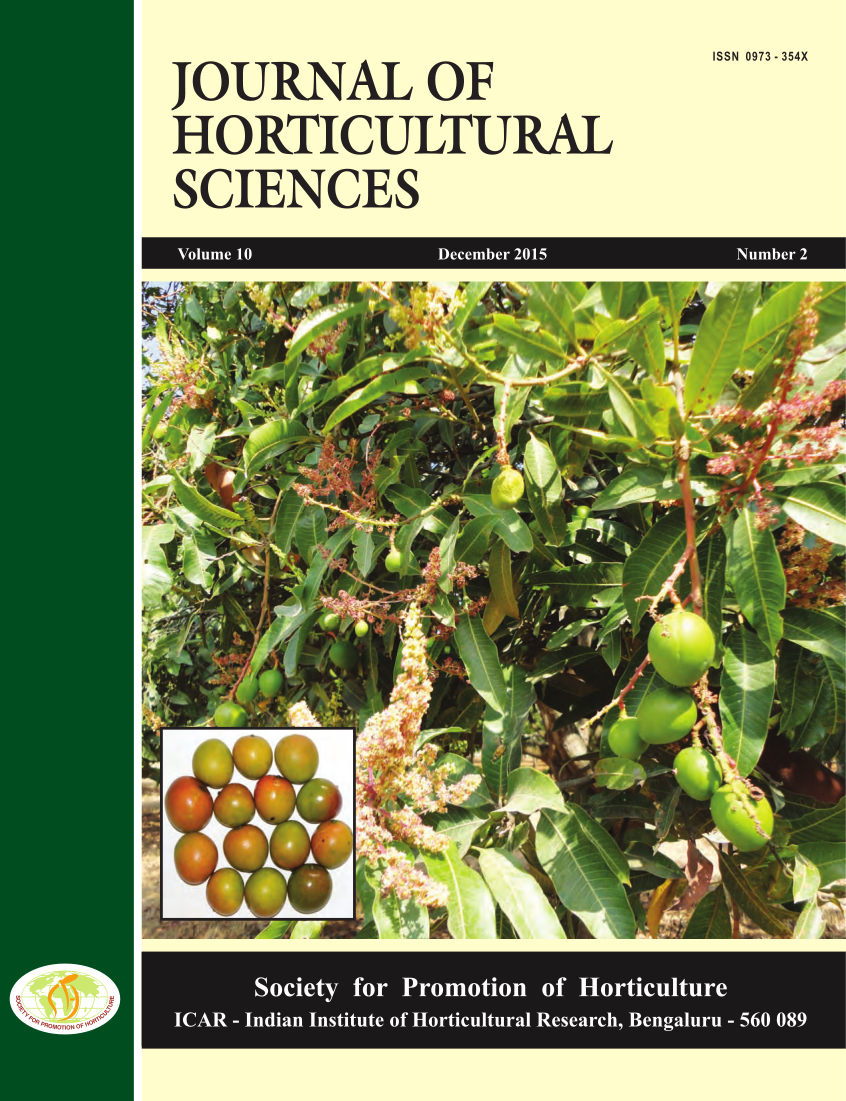Root Activity Distribution and Inter-plant Root Competition in 'Robusta' Banana (Musa Sp., 'AAA') under High-Density Planting Determined by Tracer Technique
DOI:
https://doi.org/10.24154/jhs.v10i2.141Keywords:
Banana, High-Density Planting, Inter-Plant Root Competition, Tracer Technique, 32PAbstract
By applying soil injection technique using carrier-free 32P as a tracer in 'Robusta' banana (Musa sp. 'AAA') planted at 1.5m x 1.5m spacing, during the 8th leaf stage of growth, 52.04 and 62.96% of active roots were present at 25cm across and 15cm depth, respectively. At the 16th leaf stage, only 40.5% of active roots were traced at 25cm across, and root activity increased at wider distances and deeper layers. At flower-initiation stage, a significant gain in root activity was seen at 45cm depth. Distance-wise distribution, however, did not change appreciably. At the shooting stage, 46.89% and 43.98% of the active roots were present closest to the pseudostem (25cm distance) and soil surface (15cm), respectively. However, the greatest depth (45cm) gained active roots (38.51%) at shooting-stage, creating an hour-glass pattern of root distribution, mainly owing to migration of roots from the surface (15cm deep) soil. However, a strong presence of active roots persisted close to the base of the plant, and in the surface-soil. A small proportion (>1%) of phosphorus applied to the main plant was absorbed by the orthogonal neighbour located at 1.5m distance, indicating practically insignificant competition with its closest neighbour. None of the diagonal neighbours located farthest (at 2.1m distance from the main plant) showed any activity of the tracer indicating that the root competition with the main plant was absent. Results indicate that a spacing of 1.5m × 1.5m in high-density planting of 'Robusta' banana raised in sandy-loam is optimum, with practically no untoward competition from the root for nutrients applied to each plant.
Downloads
Downloads
Published
Issue
Section
License
Authors retain copyright. Articles published are made available as open access articles, distributed under the terms of the Creative Commons Attribution-NonCommercial-ShareAlike 4.0 International License, which permits unrestricted non-commercial use, distribution, and reproduction in any medium, provided the original author and source are credited. 
This journal permits and encourages authors to share their submitted versions (preprints), accepted versions (postprints) and/or published versions (publisher versions) freely under the CC BY-NC-SA 4.0 license while providing bibliographic details that credit, if applicable.





 .
. 











